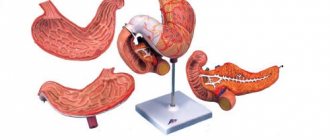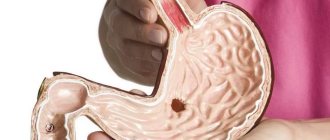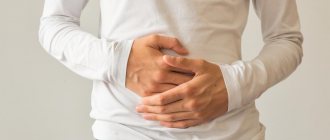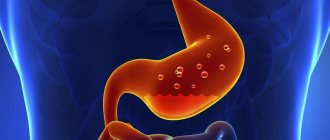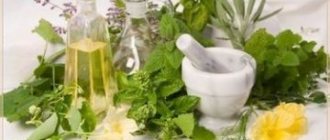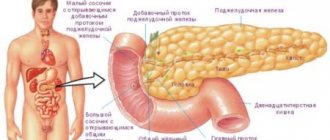Chronic gastritis is a long-term disease of the stomach, which is characterized by inflammatory or inflammatory-dystrophic changes in its mucosa and disturbances in the basic functions of the organ.
The causes of the disease are infection of the stomach with the bacterium Helicobacter pylori (less often with other bacteria or fungi), improper or inadequate nutrition, bad habits, chronic stress, etc.
The symptoms of chronic gastritis are not always pronounced : sometimes the disease does not make itself known for years or rarely manifests itself. You should be wary if after eating you start to see:
- stomach pains,
- feeling of heaviness and fullness in the upper abdomen,
- heartburn,
- bloating,
- belching,
- nausea.
Chronic gastritis occurs with periods of exacerbations and remissions. An untreated disease not only worsens a person’s quality of life, but also leads to complications : erosions, ulcers, tissue atrophy, and malignant tumors of the stomach.
What kind of disease is this?
Chronic gastritis is manifested by clinical signs (a set of data obtained from anamnesis and medical laboratory studies) and functional and morphological changes in the tissues of the stomach with disruption of the secretory, motor and other functions of the organ.
Superficial gastritis is a type of chronic gastritis according to its morphological characteristics. The disease is characterized by inflammatory-dystrophic changes in the cells of the superficial epithelial layer of the stomach.
Expert opinion
Irina Vasilievna
Practicing gastroenterologist
Superficial gastritis is considered to be the initial stage of the disease, which responds well to treatment. However, if therapy is not started in time, atrophic changes are added to the superficial changes in the mucosa, which significantly aggravates the course of the disease and worsens the prognosis for a successful cure.
The main causes of chronic superficial gastritis are infection with bacteria (Helicobacter pylori and others), nutritional disorders, long-term use of certain medications, as well as concomitant diseases of internal organs.
According to ICD-10, the superficial form of chronic gastritis is assigned code K 29.3.
Types and degrees
Superficial chronic gastritis has its own classification options. Some of the most common forms of pathology are:
- Chronic superficial antral gastritis is an inflammatory disease of the antrum of the stomach (the lower part of the organ that passes into the duodenum). With this pathology, inflammatory changes affect the upper layer of the epithelium, but do not spread to the glands and do not cause atrophy (reduction in volume) of tissues.
- Chronic focal superficial gastritis is an inflammatory change in the upper layer of the gastric mucosa, characterized by local areas of damage without hypertrophy (increase in volume) and tissue atrophy. This form of gastritis most often occurs against the background of autoimmune processes occurring in the body.
To assess the severity of chronic superficial gastritis, a visual analogue scale is used.
Depending on the number of dystrophically changed (having a structural disorder) cells among healthy cells of the surface epithelium, as well as the depth of penetration of the inflammatory process, 3 degrees of the disease are distinguished:
- 1st degree (mild). Minor dystrophic changes in the epithelial cells of the upper layer of the gastric mucosa are observed.
- 2nd degree (moderate) . The number of structurally changed cells increases significantly. Dystrophic changes affect not only superficial, but also middle glandular tissues.
- 3rd degree (strongly expressed). The number of affected cells exceeds the number of healthy ones. All layers of the mucous membrane, including the muscular layer, undergo dystrophic changes.
The prognosis for recovery from existing chronic superficial gastritis is considered favorable regardless of its severity.
Causes of gastritis
The appearance of gastritis is preceded by many factors, so it is worth finding out what to watch out for in order to avoid contracting this disease. Most of the causes can be eliminated on your own, but you should know that gastritis is not always a sign of poor nutrition, although a long period of snacking “on the go” and eating fast food will not be in vain.
Poor blood supply to the stomach can lead to gastritis
The main causes of gastritis:
- Infection with the bacterium Helicobacter pylori. This unique “flora” is not only able to survive in gastric juice, but also cause significant damage to the mucous membranes. This pest was discovered relatively recently, but the routes of transmission are already known: through contact with other people, through utensils and undisinfected medical instruments.
- Poisoning with harmful toxins. This could be due to harmful working conditions, toxic poisoning, or taking certain medications.
- Disease of other organs associated with the digestive process. For example, the release of duodenal contents often leads to the development of gastritis.
- Complications of infectious diseases. Taking medications, intoxication of the body and other negative factors that arise during treatment can provoke the appearance of pathologies on the lining of the stomach.
- Smoking and alcohol abuse. The harmful effects of such addictions have been known for a long time; in some cases, they provoke the appearance of superficial active gastritis.
- Nervous feelings and stress. With severe anxiety, many functions of the body are inhibited, so gastritis can appear literally “out of the blue.”
- Eating disorders. Last but not least, the appearance of gastritis is influenced by the quality and diet. The diet should be healthy and nutritious, and portions should be small and easily digestible.
- Some non-digestive diseases. For example, with atherosclerosis or vasculitis, the normal blood supply to the organ (stomach) is disrupted, so gastritis may appear.
Symptoms
Chronic superficial gastritis develops gradually with an increase in pathological symptoms. Exacerbations occur from time to time. As a rule, they are short-lived and may disappear on their own .
The first signs of the disease (symptoms of chronic gastritis), which are usually observed with this form of gastritis:
- pain in the upper abdomen (pain often occurs after eating and is not pronounced);
- feeling of heaviness and bloating in the abdomen;
- nausea that occurs between meals;
- lack of appetite;
- heartburn;
- belching with an unpleasant odor;
- feeling of a foreign taste in the mouth.
Expert opinion
Irina Vasilievna
Practicing gastroenterologist
Superficial gastritis is characterized by a change in the acidity of the gastric environment, which can either increase or decrease.
- Increased acidity is accompanied by heartburn, painful attacks, and a sour taste in the mouth.
- Low acidity quickly leads to tissue atrophy, and this process can occur unnoticed by the patient.
Some patients note loss of appetite, nausea, and belching (usually in the morning). The tongue may be covered with a light coating.
Symptoms of the disease
Symptoms of the superficial form of this gastrointestinal disease appear periodically - after the impact of harmful factors on the gastric mucosa. At first, remissions after exacerbations are quite long, which is why the patient attributes his feelings to the fact that this or that product simply “didn’t suit” him.
The main symptoms of superficial gastritis are as follows:
- burning, pressure in the stomach, feeling as if it is bursting;
- heaviness in the stomach after eating;
- dull or aching pain in the stomach after eating, often at night;
- the feeling of hunger is always accompanied by slight nausea;
- periodic heartburn after drinking alcohol, fatty, “heavy” foods;
- belching sour;
- when palpating (feeling) the stomach area, the patient experiences pain;
- pale skin;
- sometimes - loss of appetite, bad breath, diarrhea.
If, with all of the above, periodic pain in the pit of the stomach is also observed when eating hot or spicy food or when hungry, then this is an alarm bell - the duodenum has already become the affected area. Signs that superficial gastritis, the symptoms of which we describe the treatment, have entered the atrophic stage are as follows:
- visible weight loss, poor appetite;
- white coating on the tongue;
- constant morning belching of air;
- diarrhea;
- vomit;
- nausea;
- feeling of constant weakness.
Diagnostics
Diagnostic measures include several stages:
- Examination of the patient, collection of anamnesis . Based on the results of the initial examination, a preliminary diagnosis is made and a scheme for further diagnostic procedures is determined.
- Lab tests:
- general blood analysis;
- general urine analysis;
- stool analysis for helicobacteriosis.
- Instrumental diagnostics - This is the main type of research for making an accurate diagnosis. It includes several types of examination:
- endoscopic diagnosis with mandatory biopsy sampling - allows you to clarify the presence of Helicobacter pylori, as well as visually assess the degree of damage to the mucous membrane and the presence of precancerous changes;
- respiratory diagnostics – determining the presence of Helicobacter pylori in the patient’s exhaled air using a gas analyzer;
- Ultrasound of internal organs is a common method for determining concomitant diseases of internal organs using ultrasound diagnostics;
- intragastric pH-metry is a research method that allows you to assess the state of gastric secretion;
- electrogastroenterography – diagnostics of the motor-evacuation function of the stomach;
- Manometry of the upper gastrointestinal tract is a way to detect reflux gastritis.
Which doctor should I contact for superficial gastritis?
It is almost impossible to independently identify the presence of superficial gastritis, since its symptoms are very similar to other gastrointestinal diseases.
To make a diagnosis, you need to visit a gastroenterologist, who, based on the results of examining the patient, prescribes a whole range of tests:
- OAM and UAC;
- X-ray examination;
- collection of gastric juice;
- gastroscopy of the stomach;
- coprogram;
- gastroduodenofibroscopy.
In addition, fibrogastroduodenoscopy is often prescribed. With this study, you can learn about the condition of the mucous membrane of the organ, accurately determine the type of gastritis, oncology and the presence of ulcers.
Treatment of chronic superficial gastritis
Expert opinion
Irina Vasilievna
Practicing gastroenterologist
The set of therapeutic measures depends on the form of superficial gastritis identified during the diagnostic process. Treatment of the disease is carried out on an outpatient basis. Hospitalization is indicated during periods of exacerbation.
Usually for superficial gastritis the following are prescribed:
- a gentle diet taking into account the level of acidity of gastric juice;
- drug therapy;
- elimination of provoking factors (cessation of drinking alcohol, smoking);
- physiotherapy;
- sanatorium-resort treatment (according to indications during the period of remission).
Treatment is prescribed only by a doctor!
What do doctors usually prescribe?
The treatment regimen may vary depending on the form and degree of chronic gastritis. The following drugs are usually prescribed:
- Antibiotics. Prescribed when Helicobacter pylori is detected. The duration of treatment can be 14 days. As a rule, a combination of two drugs is used (“Metronidazole” + “Tetracycline” or “Amoxicillin” + “Clarithromycin”).
- H2 histamine receptor blockers (Ranitidine, Famotodin).
- Proton pump inhibitors (Omeprazole, Pantoprazole).
- Antacids (“Almagel”, “Phosphalugel”).
- Gastroprotectors (“De-Nol”, “Venter”).
- Enzymes (“Mezim”, “Festal”).
- Antispasmodics (“No-spa”).
Depending on the course of the disease, antiemetic drugs, vitamins, and herbal preparations may be additionally prescribed.
Folk remedies
Folk remedies for the treatment of superficial chronic gastritis can complement drug treatment, but in no case replace it.
How should natural pharmacy products be used for different types of superficial gastritis?
- Superficial gastritis with high acidity can be treated with freshly squeezed potato juice, which is taken ½ glass half an hour before meals. Treatment is also carried out by collecting herbs (yarrow herb, St. John's wort herb, celandine herb, chamomile) in the form of a decoction of ½ cup before meals.
- To treat superficial gastritis with low acidity, cabbage juice is used, which should be taken ½ glass 2-3 times a day before meals. An infusion of plantain leaves is suitable as a herbal medicine. It should be taken on an empty stomach, drinking a glass of infusion in small sips over an hour.
Help from traditional medicine
Although medications show excellent results in the fight against superficial gastritis, a good therapeutic effect can be achieved with the help of vegetable juices and herbal decoctions, which have been used in folk medicine for many centuries. A combination of medications and healing recipes will speed up recovery.
READ MORE: Rectal fissure - symptoms, treatment
Since ancient times, our ancestors treated the stomach with flaxseeds. For this recipe you will need 1 tbsp. l. seeds They are boiled in 1 liter of water for 5 minutes and then left for 2 hours. After this, the seed is passed through a sieve. The decoction produces mucus, which heals inflammation and protects the stomach from the negative effects of acids. The decoction is taken 1 tbsp. l. before every meal. Always prepare a fresh decoction, as it cannot be stored.
If a chronic diffuse disease bothers you with frequent periods of exacerbation, flaxseed oil will help prolong remission and relieve pain. It is prepared in a water bath from a mixture of 0.5 cups of sunflower oil and 6 tbsp. l. flax seeds. The mixture is boiled and stirred for 20 minutes, cooled. After this, the oil is poured into a bottle with dark glass, sealed and placed for a week in a place protected from light.
A common remedy in the fight against mild forms of gastritis is potato juice. Prepare it using a juicer or grating the vegetable on a fine grater. Then the juice is filtered. It should be consumed fresh, while the drink has not yet darkened. Since it does not taste very pleasant, they start taking it in small doses with 25 ml, then increase it to 100 ml. Drink folk medicine three times a day 30 minutes before meals for three weeks.
If chronic superficial gastritis is accompanied by frequent heartburn, an infusion of 2 tbsp will help. l. plantain and St. John's wort, 1 tsp. calamus root and peppermint, 1/3 tsp. cumin seeds. All components are mixed, placed in a thermos and poured with 2 cups of boiling water. The folk remedy is infused for at least 12 hours.
Those people who are concerned about low stomach acidity should take aloe juice along with medications. 10 drops of the juice of this plant should be consumed before meals 3 times a day. And the most delicious folk remedy that will increase pH is natural honey. 0.5 tsp. This sweet product is diluted with 50 ml of warm boiled water and drunk 30 minutes before meals.
Treatment with folk remedies is very effective, but it should not be used by pregnant women, children and adolescents. If you are allergic to any herb or plant, choose an infusion recipe without irritating components. When treating with traditional medicine, do not forget about the medications prescribed by your doctor.
Diet and menu for superficial chronic gastritis
Patients with chronic superficial gastritis should follow a gentle diet that excludes the consumption of foods that irritate the gastric mucosa (smoked meats, fast food, soda, hot and spicy foods).
Preferred dishes are lean meat, boiled vegetables and cereals, pureed low-fat cottage cheese, milk and low-fat kefir, soft-boiled eggs, jelly and herbal teas.
Meals should be fractional, all foods should be boiled, stewed or baked, dishes should be eaten warm. The diet is prescribed by the attending physician depending on the acidity of the gastric environment: table No. 1 is indicated for normal and high acidity and table No. 2 for low acidity.
An approximate weekly menu plan (outside the period of exacerbation of the disease) using diet No. 1 may look like this:
| Mon. | Tue | Wed. | Thurs. | Fri. | Sat. | Sun. | |
| 08:00 | Mashed cottage cheese with milk. Buckwheat porridge with milk. Tea with milk. | Semolina porridge with milk. Meat soufflé. Tea with milk. | Steamed meat balls. Vegetable puree from zucchini. Tea with milk. | Vegetable potato puree. Boiled fish. Tea with milk. | 2 soft-boiled eggs. Boiled vermicelli. Tea with milk. | Steamed protein omelette. Rice porridge with milk. Tea with milk. | Oatmeal with milk. Mashed cottage cheese with milk. Tea with milk. |
| 10:30 | Milk. Cookie. | Milk. Rusk. | Milk jelly. | Milk. Cottage cheese casserole. | Non-acidic kefir. Rusk. | Apple jelly. Cookie. | Baked pumpkin. Morse. |
| 13:00 | Milk soup with semolina. Steamed meat balls. Steamed protein omelette. Apple jelly. | Creamy milk soup with zucchini. Boiled beef tongue. Rice porridge on water. Fruit jelly. | Milk rice soup. Boiled meat. Carrot puree with bechamel sauce. Herb tea. | Vegetable puree soup. Boiled chicken. Boiled vermicelli with milk sauce. Apple compote. | Mashed milk soup with potatoes. Steamed meatballs. Boiled rice with milk sauce. Dried fruits compote. | Vegetable puree soup. Boiled fish. Buckwheat porridge on water. Herb tea. | Vegetable puree soup. Meat pudding. Carrot and potato puree. Apple jelly. |
| 15:30 | Banana puree. | Baked apples with cottage cheese. | Fruit and berry jelly. | Berry mousse. | Curd pudding. | Baked cottage cheese pancakes. | Cottage cheese casserole. |
| 18:00 | Fish soufflé. Boiled pasta with bechamel sauce. Herb tea. | Steamed meat pudding. Potato and carrot puree. Rose hip decoction. | Lazy dumplings with sour cream. Dried fruits compote. | Steamed veal cutlets. Buckwheat porridge on water. Rose hip decoction. | Steam cutlets. Buckwheat porridge on water. Herb tea. | Baked fish. Rice porridge with bechamel sauce. Rose hip decoction. | Steamed meatballs. Boiled vermicelli with bechamel sauce. Herb tea. |
| 20:30 | Warm milk. | Non-acidic kefir. | Warm milk. | Non-acidic kefir. | Warm milk. | Non-acidic kefir. | Warm milk. |
Diet and nutrition principles
If you have gastritis, eat right!
Diet for superficial gastritis is an integral part of treatment. The food temperature should be close to body temperature (36-40°C). Hot (above 60°C) and cold foods (below 15°C) are prohibited as they irritate the gastric mucosa.
When cooking, products should be crushed as much as possible (using a grater or blender). Ideally, the food should be liquid or the consistency of sour cream.
The number of meals should not be less than four, and in case of concomitant gastrointestinal diseases (cholecystitis, pancreatitis) - up to 6-8. Breakfast and lunch make up the bulk of the daily volume, and dinner and snacks make up a smaller part of it.
The last meal is taken 2 hours before bedtime, no later. You should not overeat and eat dry food.
It is allowed to eat:
- rice, oatmeal and semolina porridge;
- vegetable purees from potatoes, carrots, beets, zucchini, pumpkin, spinach;
- low-fat dairy products;
- boiled lean meat and lean fish (chicken, rabbit, hake, cod);
- fruit puree;
- vegetable, fish broths;
- milk soups;
- a small amount of toasted white bread:
- omelette;
- compotes, weak tea, jelly, vegetable juices;
- alkaline mineral water without gas;
- juice from potatoes and fresh cabbage;
- marshmallows, honey;
- linseed oil.
You should exclude from your diet:
- fatty broths;
- fried foods;
- baked goods, rye and whole grain bread;
- coffee, strong tea;
- cocoa, chocolate;
- sour fruits and juices from them;
- marinades, hot and spicy foods, pickles;
- food with artificial additives and spices;
- raw vegetables and fruits, as well as cereals containing a lot of fiber (apples, cabbage, corn, legumes);
- lard, fatty meat, sausage.
What's next?
With proper and timely treatment, the prognosis for superficial gastritis is favorable. Restoration of the gastric mucosa occurs faster if you follow the diet, give up bad habits and take vitamins.
Moderate physical activity and, if possible, avoidance of stress are also important.
In advanced cases, there is a high risk of complications such as stomach ulcers, the development of acute pancreatitis, and intoxication of the body. Lack of therapy for superficial gastritis can become a provoking factor for cancer or the appearance of stomach polyps.
Tags: gastritis, stomach
- Phimosis in boys and men - degrees and features...
- Prostatitis in a man - the first signs and symptoms...
- Tracheobronchitis - types, symptoms and treatment, drugs
- Sacroiliitis - degrees and symptoms, treatment, drugs
- Rhinopharyngitis - symptoms and treatment in children and adults
- Thyrotoxicosis - symptoms and treatment, consequences of the disease
What happens if you don't get treatment?
The prognosis for recovery of patients with chronic superficial gastritis is quite favorable. If treatment is not started in a timely manner, the following complications may develop:
- transition of superficial gastritis to diffuse, erosive or atrophic;
- development of peptic ulcer;
- development of duodenitis - an inflammatory disease of the duodenum.
On our website: Chronic erosive gastritis: symptoms, treatment, diet
Diet for gastritis
Dietary nutrition for this form of gastritis helps to quickly get rid of the disease. There is a list of products recommended for inclusion in the menu, as well as those that are not recommended for consumption, they are included in the following table.
| Dishes you can eat | Unauthorized products |
| Boiled porridges: semolina, oatmeal, rice | Rich soups and borscht with meat |
| Boiled vegetable puree | Marinades |
| Oven-baked fruits or fruit purees | Canned food and pickles |
| Low fat fermented milk products | Spices and seasonings |
| Compotes, fruit jelly | Fruits and vegetables with a lot of fiber. Lemons, sour berries and fruits |
| Lean fish. It could be hake, cod, pike perch, pike | Products containing fragrances and flavoring additives |
| Lean meat (not fried): turkey, chicken, beef or rabbit | Alcoholic and carbonated drinks |
The diet must be agreed with your doctor. Its maintenance at this stage of the disease is extremely important because it promotes a faster cure. Gastritis in its superficial form is much easier to treat than the disease in its advanced form. Diet helps prevent relapses of pathology.
The diet should be selected by a doctor
The basic principles of dietary nutrition are:
- Regularity of meals. It is extremely important that the diet is followed. You should eat at a certain time. In this case, you need to eat at least four times a day in small portions. You must have breakfast, and dinner should be a few hours before going to bed. This regimen will prevent heaviness in the stomach.
- Balance. Nutrition must be carefully selected in consultation with your doctor. Its caloric content and composition must correspond to the needs of the body.
- Chewing food thoroughly. It is best to consume only liquid or mushy food during the acute stage of the disease.
- Elimination of foods that are difficult to digest: cabbage, flour products, mushrooms, lamb and pork.
With a disease such as gastritis, you must strictly adhere to all doctor’s recommendations. Only in this case will it be possible to quickly get rid of the disease.
Tips and tricks
Preventive measures that are used to prevent the development of chronic gastritis include:
- rational balanced nutrition;
- maintaining food hygiene;
- giving up bad habits - smoking and strong alcohol;
- sanitization of foci of infection in the body;
- monitoring the effect of medications on the stomach: if necessary, replacing irritating medications after consulting a doctor;
- timely treatment of gastrointestinal diseases.
If you have gastritis, you can drink light alcoholic drinks; we even have articles about this that we recommend reading. Here's about beer, and here's about wine.
Mode correction
When treating gastritis, you should carefully follow the recommendations of your doctor. First of all, you need to change your lifestyle: eliminate any nervous feelings and stress. If you cannot do this yourself, you should take sedatives prescribed by your doctor. To resist stress, doctors recommend doing Pilates (one of the fitness techniques) and yoga.
In acute cases, it is advisable to eat food in the form of purees.
To recover from superficial gastritis, you must strictly adhere to a healthy diet and lifestyle. It is important to give up alcohol and smoking, get good sleep and avoid stressful situations. You need to monitor your health and undergo regular examinations with a gastroenterologist. Tests should be taken every year to monitor your general condition.
There are some nutritional rules that must be followed when treating gastritis:
- the food consumed should not be hot or cold - the optimal temperature is 37 °C;
- dishes should be boiled, in the form of puree;
- do not eat dry food, do not starve or overeat;
- dinner should be no later than two hours before bedtime.
An adult needs to eat three kilograms of food per day. In this case, 30% should be breakfast, 15% - snacks, 40% - lunch and 15% - dinner.
To normalize the condition of the stomach, the largest amount of food should be eaten at breakfast, but in no case in the evening.
